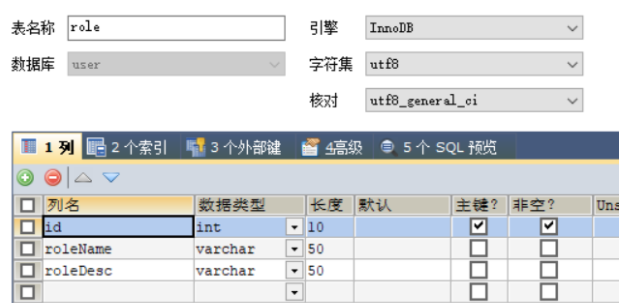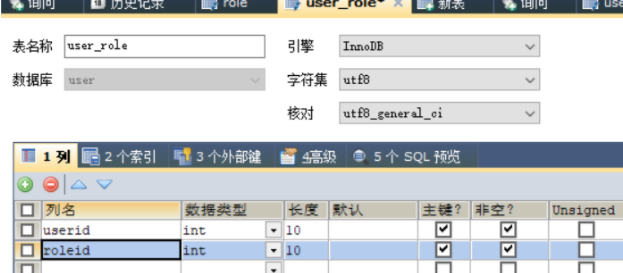springSecurity实现登录的认证与授权——实习日志7.17
1.Maven中的pom.xml配置所依赖的包
<!--放在properties属性中--> <spring.security.version>5.0.1.RELEASE</spring.security.version> <dependency> <groupId>org.springframework.security</groupId> <artifactId>spring-security-web</artifactId> <version>${spring.security.version}</version> </dependency> <dependency> <groupId>org.springframework.security</groupId> <artifactId>spring-security-config</artifactId> <version>${spring.security.version}</version> </dependency> <dependency> <groupId>org.springframework.security</groupId> <artifactId>spring-security-core</artifactId> <version>${spring.security.version}</version> </dependency> <dependency> <groupId>org.springframework.security</groupId> <artifactId>spring-security-taglibs</artifactId> <version>${spring.security.version}</version> </dependency>
2.在WEB-INF目录下的web.xml文件中添加过滤器
<filter> <filter-name>springSecurityFilterChain</filter-name> <filter-class>org.springframework.web.filter.DelegatingFilterProxy</filter-class> </filter> <filter-mapping> <filter-name>springSecurityFilterChain</filter-name> <url-pattern>/*</url-pattern> </filter-mapping>

<?xml version="1.0" encoding="UTF-8"?> <beans xmlns="http://www.springframework.org/schema/beans" xmlns:security="http://www.springframework.org/schema/security" xmlns:xsi="http://www.w3.org/2001/XMLSchema-instance" xsi:schemaLocation="http://www.springframework.org/schema/beans http://www.springframework.org/schema/beans/spring-beans.xsd http://www.springframework.org/schema/security http://www.springframework.org/schema/security/spring-security.xsd"> <security:global-method-security pre-post-annotations="enabled" jsr250-annotations="enabled" secured-annotations="enabled"></security:global-method-security> <!-- 配置不拦截的资源 --> <security:http pattern="/login.jsp" security="none"/> <security:http pattern="/failer.jsp" security="none"/> <security:http pattern="/css/**" security="none"/> <security:http pattern="/img/**" security="none"/> <security:http pattern="/plugins/**" security="none"/> <!-- 配置具体的规则 auto-config="true" 不用自己编写登录的页面,框架提供默认登录页面 use-expressions="false" 是否使用SPEL表达式(没学习过) --> <security:http auto-config="true" use-expressions="true"> <!-- 配置具体的拦截的规则 pattern="请求路径的规则" access="访问系统的人,必须有ROLE_USER的角色" --> <security:intercept-url pattern="/**" access="hasAnyRole('ROLE_USER','ROLE_ADMIN')"/> <security:form-login login-page="/login.jsp" login-processing-url="/login.do" default-target-url="/index.jsp" authentication-failure-url="/failer.jsp" authentication-success-forward-url="/pages/main.jsp"/> <!-- 关闭跨域请求 --> <security:csrf disabled="true"/> <!--退出并跳转到首页--> <security:logout invalidate-session="true" logout-url="/logout.do" logout-success-url="/login.jsp"></security:logout> </security:http> <!-- 切换成数据库中的用户名和密码 --> <security:authentication-manager> <security:authentication-provider user-service-ref="userInfoService"> <!-- 配置加密的方式 <security:password-encoder ref="passwordEncoder"/> --> </security:authentication-provider> </security:authentication-manager> <!-- 配置加密类 --> <bean id="passwordEncoder" class="org.springframework.security.crypto.bcrypt.BCryptPasswordEncoder"/> <!-- <bean id="webexpressionHandler" class="org.springframework.security.web.access.expression.DefaultWebSecurityExpressionHandler" />--> <!-- 提供了入门的方式,在内存中存入用户名和密码 <security:authentication-manager> <security:authentication-provider> <security:user-service> <security:user name="admin" password="{noop}admin" authorities="ROLE_USER"/> </security:user-service> </security:authentication-provider> </security:authentication-manager> --> </beans>
3.在web.xml 里面加载springSecurity.xml,方法是在该文件中的context-param中的param-value新增classpath:spring-security.xml
4.在数据库中新建两张表role和user_role


相关代码:
package com.zhongruan.bean; public class Role { private int id; private String roleName; private String roleDesc; public int getId() { return id; } public void setId(int id) { this.id = id; } public String getRoleName() { return roleName; } public void setRoleName(String roleName) { this.roleName = roleName; } public String getRoleDesc() { return roleDesc; } public void setRoleDesc(String roleDesc) { this.roleDesc = roleDesc; } @Override public String toString() { return "Role{" + "id=" + id + ", roleName='" + roleName + '\'' + ", roleDesc='" + roleDesc + '\'' + '}'; } }

package com.zhongruan.dao; import com.zhongruan.bean.Role; import javax.print.DocFlavor; import java.util.List; public interface IRoleDao { List<Role> findRoleByUserId(int userId); }

@Override public UserDetails loadUserByUsername(String username) throws UsernameNotFoundException { UserInfo userInfo =userInfoDao.findUserByName(username); List<Role>roles=roleDao.findRoleByUserId(userInfo.getId()); User user=new User(userInfo.getName(),"{noop}"+userInfo.getPassword(),getAuthority(roles)); return user; } private Collection<? extends GrantedAuthority> getAuthority(List<Role> roles) { List<SimpleGrantedAuthority>list=new ArrayList<>(); for(Role role:roles){ list.add(new SimpleGrantedAuthority("ROLE_"+role.getRoleName())); } return list; }
可以将UserInfoController中的login.do方法注释掉
修改login.jsp
修改响应路径即可



